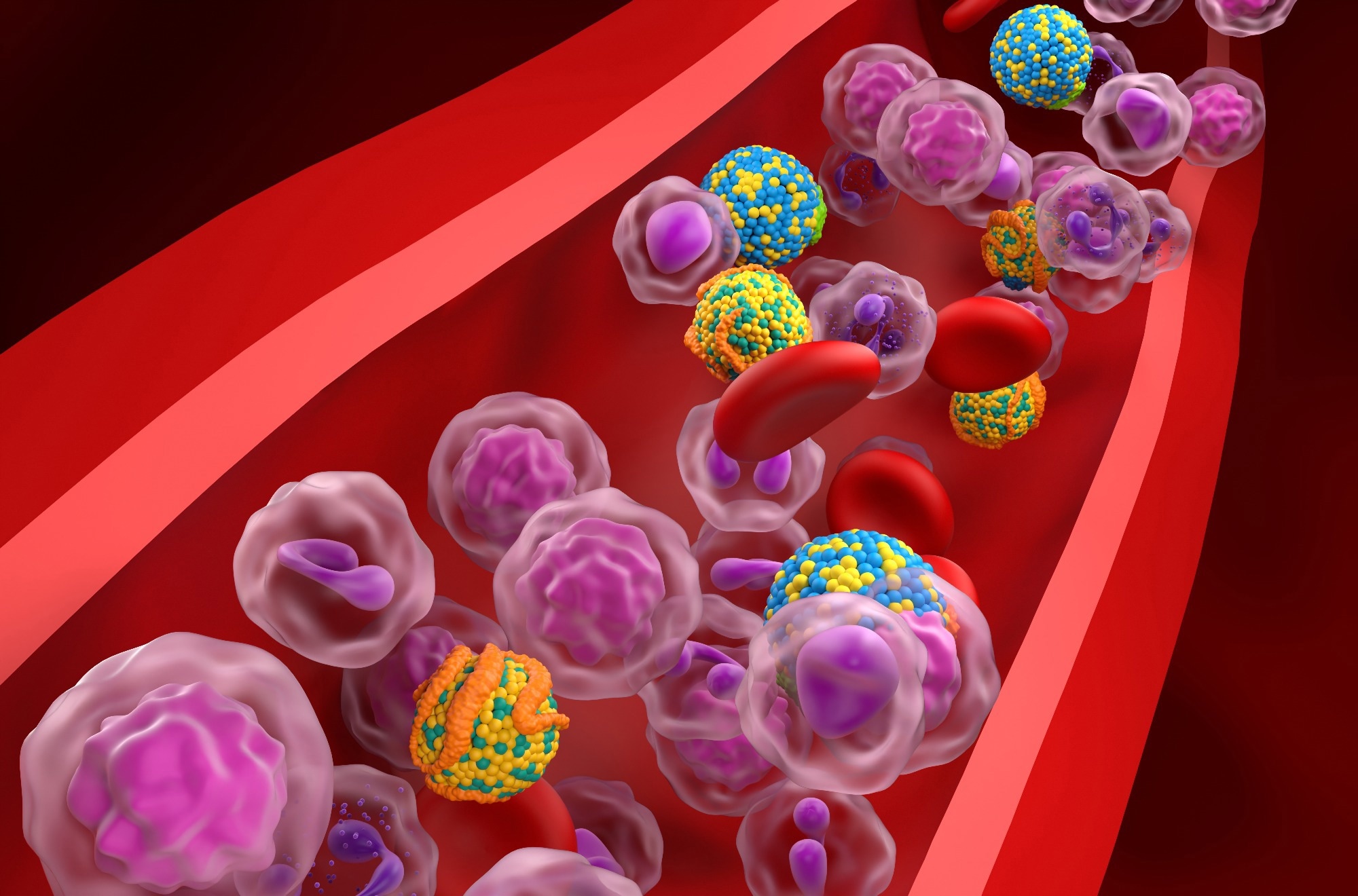Study deciphers the molecular handshake between LDL receptors and apoB100, shedding light on cholesterol metabolism and its role in cardiovascular disease.
 Study: Structure of apolipoprotein B100 bound to the low-density lipoprotein receptor. Image Credit: Nemes Laszlo / Shutterstock
Study: Structure of apolipoprotein B100 bound to the low-density lipoprotein receptor. Image Credit: Nemes Laszlo / Shutterstock
In a recent study published in the journal Nature, researchers elucidated the structural basis of apolipoprotein B100 (apoB100) interaction with the low-density lipoprotein receptor (LDLR) and its implications for low-density lipoprotein (LDL) dimer formation and familial hypercholesterolemia (FH).
Background
LDL plays a critical role in cardiovascular disease, the leading global cause of morbidity and mortality. It transports cholesterol, with most clearance mediated by LDLRs on hepatocytes. Disruptions in LDLR function or apoB100 mutations, as seen in FH, lead to low-density lipoprotein cholesterol (LDL-C) accumulation, triggering atherosclerosis. 3-hydroxy-3-methylglutaryl-coenzyme A reductase inhibitors (statins), the primary therapy, lower LDL-C by enhancing LDLR expression, yet many FH-related mutations lack mechanistic understanding. The apoB100 β-belt, a continuous amphipathic structure that encircles the LDL lipid core, plays a central role in LDLR binding but is challenging to study due to its lipid-dependent folding and large size. Further research is needed to unravel these mechanisms and improve cardiovascular disease prevention and treatment.
About the Study
The present study employed advanced cryo-electron microscopy (cryo-EM) techniques to elucidate the interactions between apoB100, LDL, and the LDLR. Low-density lipoprotein particles were purified from human plasma, isolated using sequential flotation ultracentrifugation, and characterized for optimal cryo-EM imaging. The extracellular domain of the LDLR, containing a single point mutation to enhance stability, was recombinantly expressed in human embryonic kidney 293T (HEK293T) cells. A high-affinity nanobody-legobody scaffold was also employed to stabilize apoB100 and facilitate particle alignment during imaging.
Cryo-EM data collection involved single-particle analysis to determine the structural features of LDL, apoB100, and their complexes with the LDLR. Iterative refinement techniques enhanced resolution, enabling detailed modeling of the apoB100 β-belt and its dual binding interfaces with the LDLR. Cross-linking experiments validated these findings, ensuring the structural integrity of the models.
The study achieved high-resolution reconstructions of apoB100-LDLR complexes using these methods, revealing dual binding interfaces critical for low-density lipoprotein dimerization and LDLR cycling.
Study Results
The LDLR, a type 1 transmembrane protein and member of the LDLR superfamily, mediates the dimerization of LDL. Its extracellular domain consists of seven type A LDLR modules (LA1–LA7), three epidermal growth factor-like (EGF) modules, a β-propeller domain, and an O-glycosylated region. The LDLR extracellular region (residues 22–788) was expressed recombinantly and purified for structural studies, while LDL was isolated from human plasma using flotation ultracentrifugation. The study confirmed LDLR binds LDL with high affinity, with dissociation constants ranging from 1.2 to 2.2 nM.
Using cryo-EM, LDLR was observed as a monomer in isolation but oligomerized into higher-order complexes when bound to LDL. These complexes revealed that LDLR mediates LDL dimerization through interactions at two distinct binding sites on apoB100, the primary structural protein of LDL. One binding site involves LDLR modules LA3 to LA7 and EGF-A engaging a β-belt region on apoB100, while the other is formed by the β-propeller domain of LDLR binding to apoB100’s N-terminal domain.
Further structural analyses of the LDL–LDLR complex showed the dimeric LDL particles are connected by two LDLR molecules in a 2:2:2 configuration (LDL:LDLR:legobody). This arrangement enables efficient receptor-mediated endocytosis. Local refinements of cryo-EM data identified the apoB100 β-belt as a continuous amphipathic structure wrapped around LDL’s lipid core. The β-belt consists of five panels connected by loops, with key regions contributing to LDLR binding. These structural features align with functional assays and provide insight into the dynamics of LDL metabolism.
FH mutations were mapped to the LDLR–apoB100 binding interface, clarifying their impact on LDL clearance. Mutations such as R3059C, K3394N, and R3527Q, located in the apoB100 β-belt, significantly reduced LDL binding and uptake. These findings validate the mechanistic disruption caused by FH mutations, highlighting the structural basis of defective LDLR function. The study underscores the critical role of LDLR in LDL dimerization and cellular uptake, offering structural insights into receptor cycling and the pathogenesis of hypercholesterolemia.
Conclusions
By identifying two distinct binding interfaces, the findings validated the mechanisms underlying LDL dimerization, receptor cycling, and the impact of FH mutations. These structural insights highlight how disruptions in apoB100–LDLR interactions contribute to elevated LDL-C levels and cardiovascular disease. The discovery of these dual-binding sites provides a mechanistic framework for targeted therapies aimed at improving LDL clearance and reducing hypercholesterolemia-related complications.
Journal reference:
- Reimund, M., Dearborn, A. D., Graziano, G., Lei, H., Ciancone, A. M., Kumar, A., Holewinski, R., Neufeld, E. B., J., F., Remaley, A. T., & Marcotrigiano, J. (2024). Structure of apolipoprotein B100 bound to the low-density lipoprotein receptor. Nature, 1-7. DOI: 10.1038/s41586-024-08223-0, https://www.nature.com/articles/s41586-024-08223-0